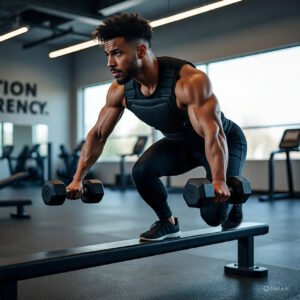Neuro-Muscular Training

Educational overview — structured for policy compliance and readability.
Introduction
Neuro-muscular training focuses on the two-way highway between brain and muscle. Using sensors and adaptive software, it aims to sharpen motor control, speed reaction times, and make movements more efficient.
Cortico-Muscular Synchronization
Aligning motor-cortex signals with muscular output
The goal is precise timing between cortical commands and muscle fiber recruitment. AI-assisted systems combine EEG and EMG to estimate neural drive efficiency and surface form faults in real time. Training protocols then target lag, co-contraction, or asymmetries to improve accuracy, reaction time, and overall control.
Hyper-Adaptive Algorithms
Personalized neuro-training via real-time data
Emerging algorithms read brain and muscle signals on the fly and adjust load, tempo, and cueing. If attentional focus drops, systems can reduce intensity or add sensory prompts (audio/visual) to restore engagement. Over time, models learn an individual “neural signature,” tailoring sessions to the user’s current state.
Neuro-Repatterning for Rehabilitation
BCIs, exoskeletons, and pathway reactivation
For stroke or spinal-injury rehab, brain–computer interfaces let users drive assistive devices with intention signals. By correlating neural activity with aided movement, software helps re-activate pathways and gradually offload assistance as control returns—complementing conventional therapy.
Applications in Elite Sports
Precision skills with lower mental load
Sport-specific neuro-performance protocols refine start reactions, targeting, or pacing. As coordination becomes more automatic and efficient, mental fatigue often drops, supporting consistent high-quality reps and fewer errors under pressure.
Future Evolution of Neuro-Muscular Fitness
Expect home neuro-training platforms with virtual coaches, game-like progress loops, and wearables that sync EEG/EMG proxies from consumer devices. Beyond strength and balance, programs will target attention control, dual-tasking, and cognitive resilience.
Sources & further reading
- Intro resources on EEG/EMG use in motor control and rehab.
- Peer-reviewed work on neuro-plasticity and BCI-assisted recovery.
- Sports science literature on reaction time, coordination, and skill automation.
Contact: you@example.com
Disclaimer: The information in this article is for educational purposes only and is not medical advice. Always consult qualified clinicians or rehabilitation specialists before starting neuro-muscular or BCI-assisted training, especially after neurological injury.